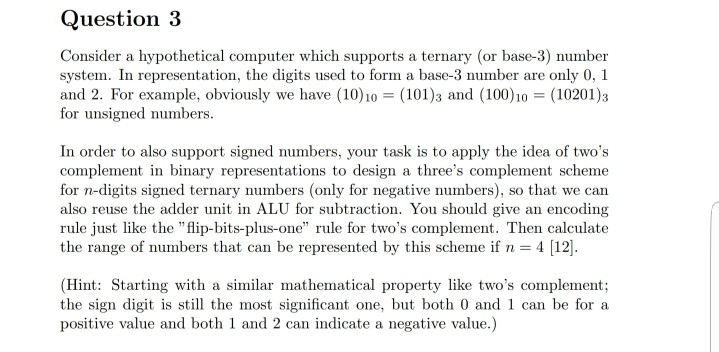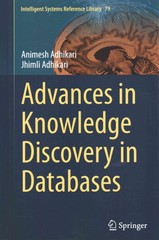Answered step by step
Verified Expert Solution
Question
1 Approved Answer
Question 3 Consider a hypothetical computer which supports a ternary (or base-3) number system. In representation, the digits used to form a base-3 number are

Question 3 Consider a hypothetical computer which supports a ternary (or base-3) number system. In representation, the digits used to form a base-3 number are only 0, 1 and 2. For example, obviously we have (10 (101)3 and (100) (10201)3 r unsigned numbers In order to also support signed numbers, your task is to apply the idea of two's complement in binary representations to design a three's complement scheme for n-digits signed ternary numbers (only for negative numbers), so that we can also reuse the adder unit in ALU for subtraction. You should give an encoding rule just like the "flip-bits-plus-one" rule for two's complement. Then calculate the range of numbers that can be represented by this scheme if n 4 12 (Hint: Starting with a similar mathematical property like two's complement; the sign digit is still the most significant one, but both 0 and 1 can be for a positive value and both 1 and 2 can indicate a negative value.) Question 3 Consider a hypothetical computer which supports a ternary (or base-3) number system. In representation, the digits used to form a base-3 number are only 0, 1 and 2. For example, obviously we have (10 (101)3 and (100) (10201)3 r unsigned numbers In order to also support signed numbers, your task is to apply the idea of two's complement in binary representations to design a three's complement scheme for n-digits signed ternary numbers (only for negative numbers), so that we can also reuse the adder unit in ALU for subtraction. You should give an encoding rule just like the "flip-bits-plus-one" rule for two's complement. Then calculate the range of numbers that can be represented by this scheme if n 4 12 (Hint: Starting with a similar mathematical property like two's complement; the sign digit is still the most significant one, but both 0 and 1 can be for a positive value and both 1 and 2 can indicate a negative value.)
Step by Step Solution
There are 3 Steps involved in it
Step: 1

Get Instant Access to Expert-Tailored Solutions
See step-by-step solutions with expert insights and AI powered tools for academic success
Step: 2

Step: 3

Ace Your Homework with AI
Get the answers you need in no time with our AI-driven, step-by-step assistance
Get Started


